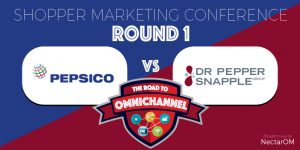Are you ready to harness the power of big data in your marketing?
“Big Data” is everywhere and corporations are taking advantage of it to improve different aspects of their businesses and operations.
This includes extracting insights from a large amount of consumer data to drive marketing initiatives in the relatively new discipline of “data-driven marketing,” which is becoming increasingly popular among businesses because of its effectiveness.
What’s data-driven marketing
Data-driven marketers extract marketing insights to analyze customer data and make decisions. They use consumer information to target media purchases and refine creative messaging which can further optimize the effects of their campaigns.
Such practice is made possible by the increasing the quality and quantity of the marketing data available through a variety of digital touch points and marketing channels and the personalization, distribution, and automation technologies that can help lower cost and increase efficiency.
The use of consumer data helps marketers deliver the right message to the right audience at the right stage of their buyer’s journey through the right channel to maximize the ROI of their marketing budget.
The collection of data from these marketing campaigns also allows marketers to understand what works and what doesn’t – creating a virtuous cycle so they can further refine their strategies to optimize results.
The benefits of data-driven marketing
The initial effort of collecting data and setting up the technologies can seem daunting if you’re new to data-driven marketing.
However, once the systems are set up, you will be able to reap the myriad advantages of data-driven marketing in no time:
1. Deliver the relevant marketing message
If you’re delivering irrelevant marketing messages to your customers, you could be doing more harm than good. 74% of online consumers get frustrated with websites when the content doesn’t reflect their interests.
In addition, email campaigns with personalized content tailored to the recipients’ preferences and habits result in 6 times higher transaction rate, 29% higher unique open rates, and 41% higher unique click rates.
Being relevant is the key to standing out in today’s cluttered market because it allows you to deliver the right message to the right audience at the right time to maximize engagement and conversion.
2. Monitor campaign performance
John Wanamaker once said, “Half the money I spend on advertising is wasted; the trouble is I don’t know which half.”
With data-driven marketing, this quote will become a thing of the past.
Technologies that make data-driven marketing feasible also allow you to collect detailed metrics on the performance of your campaigns and measure them against key performance indicators (KPIs) to ensure that your marketing strategies are meeting your business objectives.
Data-driven marketers can track their marketing dollars along the customer journey “all the way to the bank.” This information can help them quantify the effectiveness of their strategies and get leadership support for their initiatives.
3. Optimize marketing strategy
By collecting real-time data from multiple customer touch points, marketers can easily point out what works and what doesn’t and make adjustments to respond quickly to the audience reaction and sentiment.
Data analysis allows marketers to fine-tune their messaging, distribution channels, or offers while a campaign is in progress to optimize results.
The foundation of data-driven marketing
Data-driven marketing strategies are only as good as your ability to collect and utilize your customer data.
A robust customer data management platform (DMP) allows you to gather customer information from a variety of touch points and manage all the data in one centralized location.
From there, you can create highly targeted marketing campaigns based on each individual customers’ preferences and collect the necessary data to further hone your strategies.


